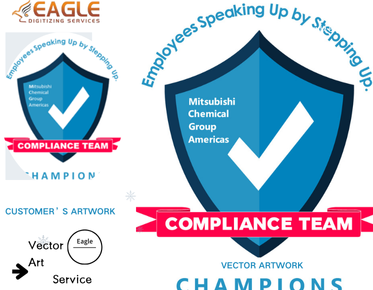Converting Vector Files to JPG: A Comprehensive Guide
Converting vector files to JPG format can seem like a daunting task, especially with the array of different file types and software available. Whether you're a graphic designer, a marketing professional, or just someone looking to edit some images, understanding how to transition from vector to raster formats can save time and enhance your projects.
Understanding Vector and JPG Formats
Vector files, such as SVG, AI, and EPS, are composed of paths defined by mathematical expressions. This allows them to be infinitely scaled without loss of resolution, which is ideal for creating graphics like logos and illustrations. On the other hand, JPG is a commonly used raster format that represents images with pixels, making it suitable for displaying photographs and web images where scalability isn't a priority.
Why Convert Vector to JPG?
Converting a vector file to a JPG may be necessary for a variety of reasons. Primarily, JPG files are more universally readable, making them advantageous for sharing images across platforms and devices. Additionally, JPGs tend to have smaller file sizes compared to vectors, which is beneficial for web use where loading times and data use are considerations.
Tools and Methods for Conversion
There are numerous tools available for converting vector files to JPG. Here are some of the top methods:
1. Adobe Illustrator
One of the most powerful software for handling vector graphics is Adobe Illustrator. It offers an easy conversion process. Simply open your vector file, go to 'File' > 'Export' > 'Export As' and select JPG as your format. Customize your settings and click 'Export' to complete the process. Adobe Illustrator provides various options that let you control the resolution and quality of the output image.
2. Online Vector Conversion Services
Using online vector conversion services can be a convenient option if you do not have access to commercial software like Illustrator. These services generally allow you to upload your vector file, select the desired output format (JPG), and download the converted file directly from their website. It's a quick and user-friendly option for anyone looking to do basic conversions without specialized software【4:0†source】.
3. Other Specialized Software
Software like CorelDRAW can also convert vector files to JPGs effectively. Like Adobe Illustrator, CorelDRAW offers precision control over the conversion process, giving options to manage the resolution and color output of the resulting JPG.
Considerations When Converting
When transitioning from vector to raster, there are certain considerations to keep in mind:
Resolution and Quality
The biggest transition from vector to JPG involves moving from a format without resolution limitations to one that's pixel-based. Choose a high resolution when exporting to maintain quality, especially if the end file is for print. You should set the DPI (dots per inch) depending on your purpose—300 DPI for print, 72 DPI for web use, etc.
File Size and Compression
JPG files offer compression settings that directly affect the quality and size of the file. A lower quality setting results in a smaller file size but at the cost of image clarity and sharpness. It's crucial to find a balance that meets your needs, whether for fast online loads or high-detail prints.
The Role of Eagle Digitizing in Vector Conversions
For those looking for professional help in managing their vector conversions, Eagle Digitizing emerges as a premier provider. They offer specialized services including vector art conversion for numerous applications【4:0†source】. Their team uses advanced techniques to ensure conversions are handled smoothly, preserving the original quality of your designs. Eagle Digitizing also excels in transforming intricate designs into clean, scalable vectors, which might later be converted to JPG if needed.
Practical Tips for Successful Conversion
To ensure the best outcomes from your vector-to-JPG conversion process, consider these practical tips:
Maintain Original Files
Always keep a copy of your original vector file. This ensures that you can make any necessary adjustments or try different settings if the initial conversion doesn't meet your needs.
Test on Multiple Platforms
Since JPGs can display differently across devices and screens, it's beneficial to test your converted images on various platforms to guarantee consistency in appearance.
The Future of Image Formats in Digital Design
As digital design continues to evolve, the lines between vector and raster graphics may further blur with the advent of new technologies. Understanding both formats' strengths will remain vital, especially as new platforms and tools emerge to streamline and enhance graphic design work. Keeping up-to-date with vector conversion techniques will prepare you for a more flexible design process, whether creating stunning visuals for print or dynamic images for the web.
.png)


